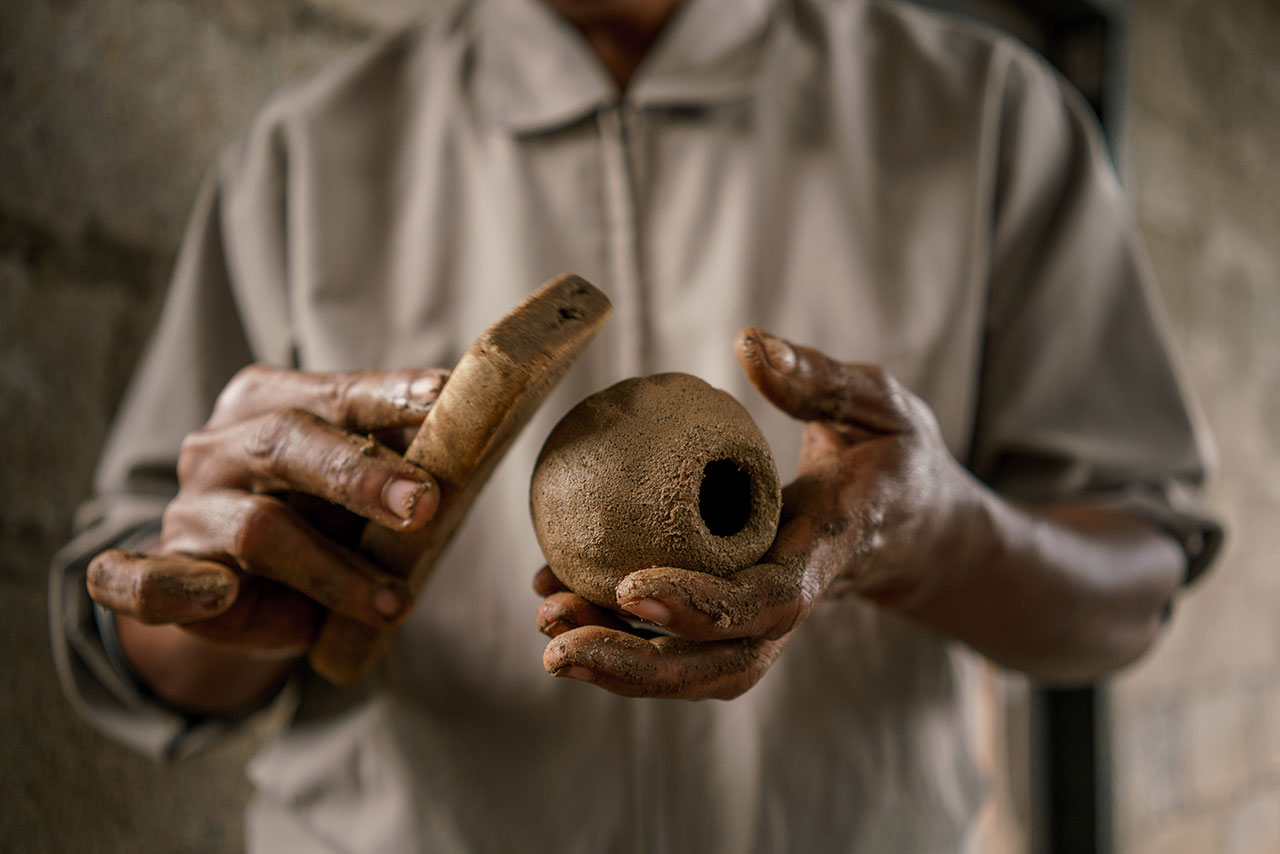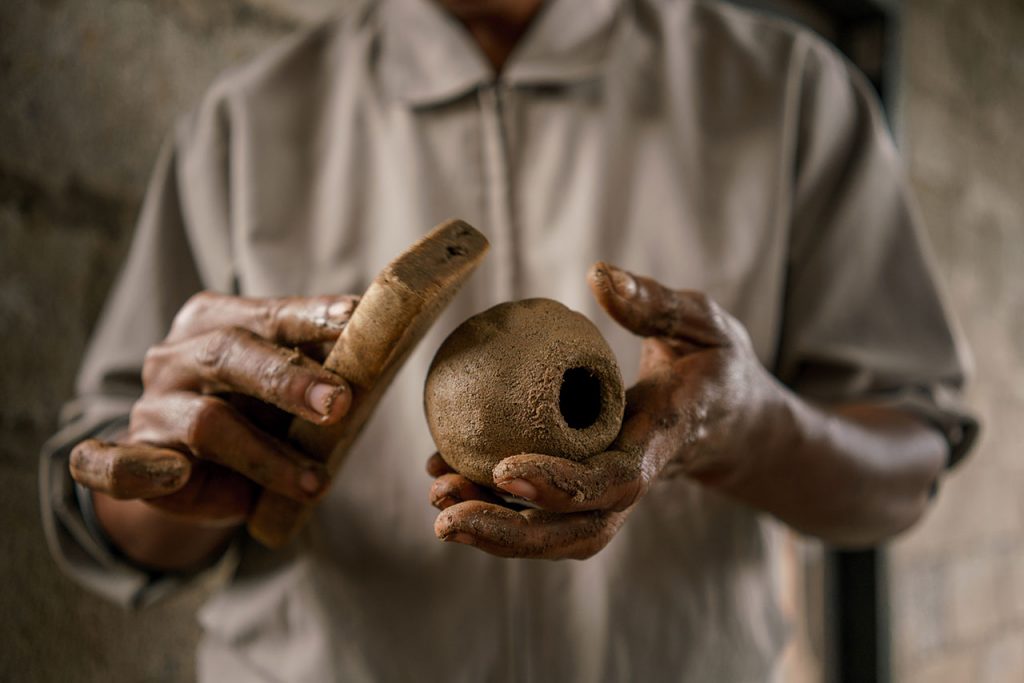
The rainfall that was repressed during our first day in Cagayan was now letting on. Dark clouds loomed overhead and followed us like vultures waiting to pounce. Everything was bleak and the air was heavy with the smell of ozone. But despite the less than cheerful weather, we put on our best smiles and bucked up.
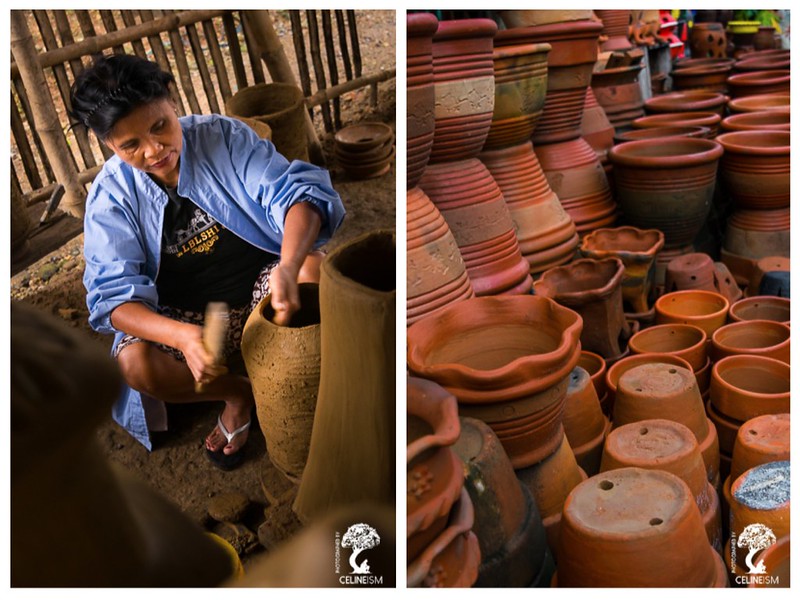
Iguig Pottery
That dreary morning, we eventually found ourselves in the town of Iguig, in a baranggay wholly committed to making pottery. All the households here specialize in some form of the art. They craft their products traditionally – by hand, without use of any modern implements, not even a potter’s wheel. Every intricate design is created by controlled movements of the wrists and fingers, with measured care and practiced motions. A precise mixture of red and black mud are used to create their masterpieces. Dadap, they call the former; hula, the other. They have to be equal in parts lest the final product turn out brittle and discolored. To harden the clay, they use kilns, usually found in their backyards, fed by firewood.
It was fascinating to see the residents so engaged and intent on their craft. This was the daily going-ons in the place, we were told. It did feel genuine, like they will continue to do what they were doing with or without our intrusion. They were generous too, answering every question, even letting us try pottery ourselves.
After a tour of the community, we were taken to one of the many roadside pottery stores. Here is where most of the pieces from the local potters are sold. From pocket-size ashtrays to enormous vases, all are sold for cheap. But I find that going directly to the potters for these products yields even cheaper prices.

Calvary Hills and Church
Still in Iguig, our next stop was the Calvary Hills and San Antonio De Galicia Church. The Hills was sprawling, eleven hectares in total and overlooking the Cagayan River which was murky from the rains. With stone tableaus of the stations of the cross, it was obvious the place was popular among pilgrims.

The church itself brings the castles of Scotland to mind. It had a battered quality to its reddish structure, perhaps owing this to the flying buttresses that hold it in place. Set against a sweep of green, and with an unobstructed view of sky and water, all that was missing for a truly pastoral scene was a herd of sheep.
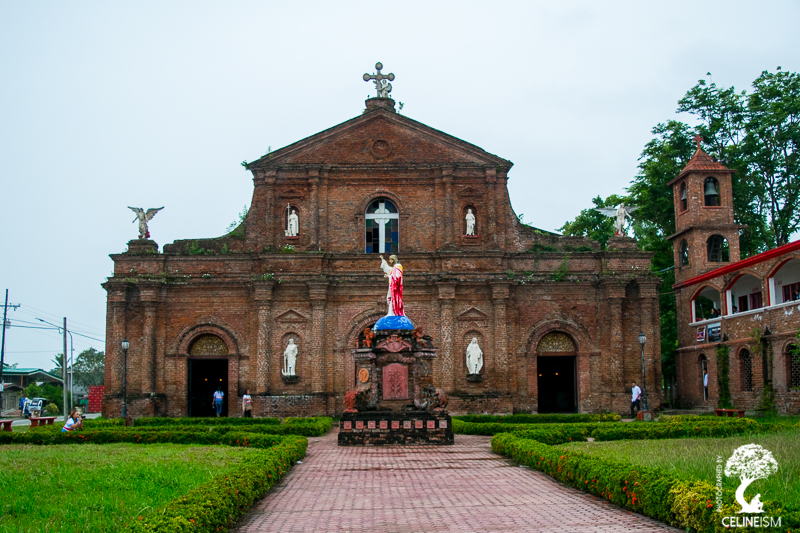
Alcala
The next destination was another church. With walls spanning 90m x 30m, St. Philomene Church in the town of Alcala dates back to the Spanish era, making it not just the “widest” red brick church but also the oldest. It lies adjacent to the St. Philomene Academy which , like the church, has a façade of red bricks. There is also a beautiful courtyard just before the entrance to the church. Walking around it sort of transports you back to time.
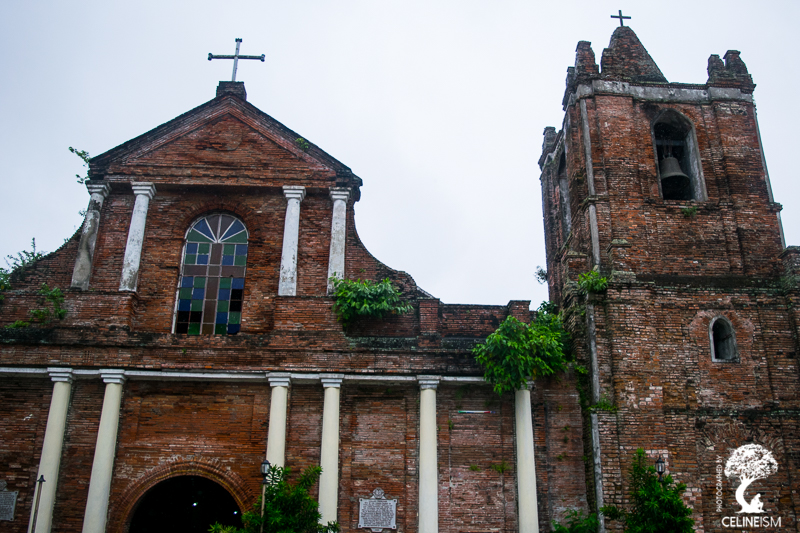
Lal-lo
After the town of Alcala, we moved farther up north to the charming town of Lal-lo. It was once known as the city of Nueva Segovia and was formerly the seat of the Diocese of the selfsame before it was moved to Vigan in Ilocos Sur. The Sto. Domingo de Guzman Church is found here, which, incidentally, is the only standing Spanish Structure in the municipality. While still staying true to the red-brick motif of Cagayan, one distinguishing feature of the church is the giant clam shell in the altar. The glistening iridescent shell is fastened just below the crucifix and serves as the lid for the church tabernacle. The shell is from the indigenous Batissa violacea – a freshwater clam that’s abundant in the Cagayan River, and is also the most expensive. Farming these prized clams is one of the main industries of Lal-lo.
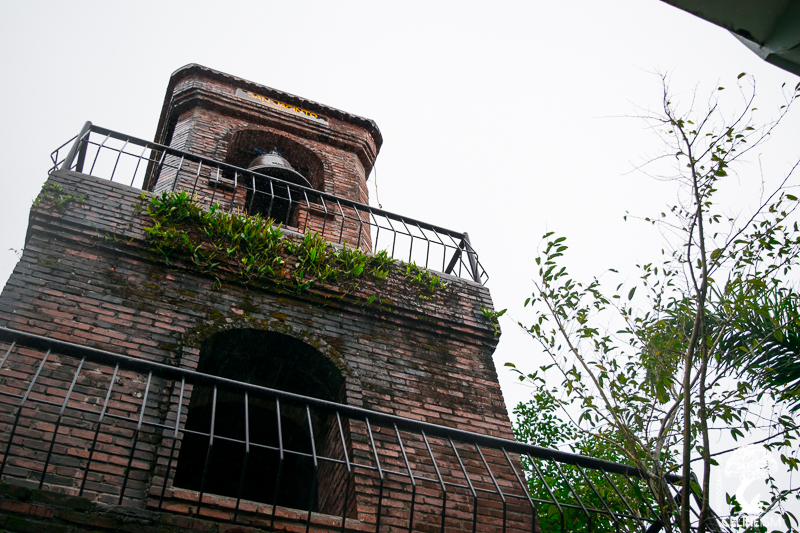
Camalaniugan
The rains turned for the worst as we headed to the town of Camalaniugan. In the ruins of San Jacinto de Polonia Church, where the oldest brick bell tower stands, we battled wind and water. Wet, the red bricks of the structure became a muted brown. Above, the sky was ominous. Hunched and drenched, we wrapped our cameras under our clothes, daring from time to time to bring it out to take a photo.
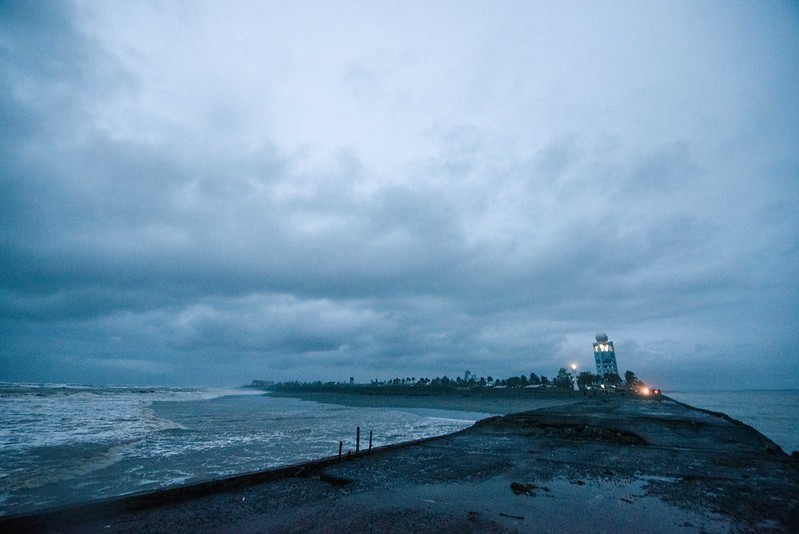
Aparri
It was dark when we reached Aparri – the northernmost tip of mainland Luzon. The weather indicated storms. We were shivering even without the air-conditioning of the bus. In fact, it was colder outside than inside the vehicle, making us reluctant to alight. It was unfortunate, too, that we did not have enough daylight when we arrived. It would have been impressive to stand on the Aparri Delta and witness how the Cagayan River merged with the West Philippine Sea. However, upon being splashed with brine even from a significant distance and hearing the roaring waves in the dark, I thought, “Yeah, I’m good.”
When we checked in for the night at Riverview Royale Hotel, the rains had already mellowed down. Before turning in, there was only one thing I wanted for tomorrow: a bright, sunny day.
Essential Information
Calvary Hills and San Antononio De Galicia Church
Cagayan Valley Rd, Iguig, Cagayan
St. Philomene Church
Maharlika Highway, Alcala, Cagayan
Sto. Domingo de Guzman Church
Lal-lo Cagayan
Riverview Royale Hotel
Cagayan Valley Rd, Aparri, Cagayan
+63 949 480 0910 / +63 917 8025 776
My name is Celine, forever 18, thrill-seeker, tree-hugger, moon-worshipper, tea-chugger, and storyteller extraordinaire!
